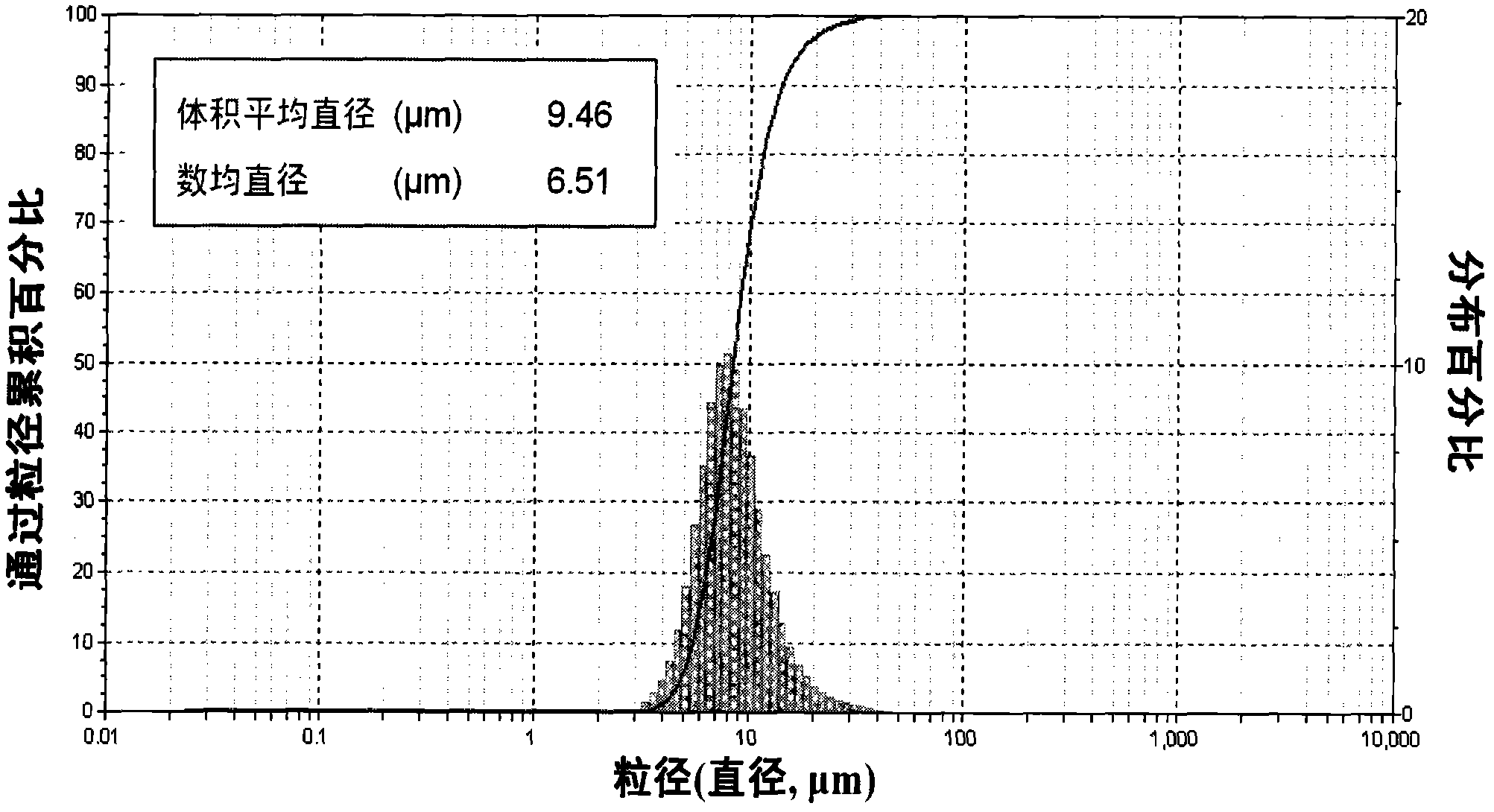Preparation method of polylactic acid particles
A technology of polylactic acid microparticles and polylactic acid, which is applied in the field of polymer microparticle preparation, can solve the problems of difficult scale-up of pilot scale, complicated preparation process, and numerous influencing factors, and achieve the effect of low equipment requirements, simple operation process and mild conditions
- Summary
- Abstract
- Description
- Claims
- Application Information
AI Technical Summary
Problems solved by technology
Method used
Image
Examples
Embodiment 1
[0039] In a three-necked flask of 500ml, add 6.0g polylactic acid (D lactic acid mass content 4.25%, model is Ingeo TM Biopolymer 4043D), 5.0g polyvinylpyrrolidone, 92g diethylene glycol dimethyl ether, heated to 140°C, and stirred at a speed of 450rpm until the polymer was dissolved. The temperature of the system was lowered to 60° C., and then 100 g of deionized water was added dropwise to the above system at a rate of 1.67 g / min. After the dropwise addition, the resulting suspension was filtered, washed with 200 g of deionized water, filtered, and the filtrate was vacuum-dried at 45° C. for 12 hours to obtain 2.8 g of white polylactic acid powder with a volume average diameter of 3.5 μm, the particle size distribution index is 1.6, and the oil absorption is 90mL / 100g.
Embodiment 2
[0041] In a three-necked flask of 500ml, add 3.0g polylactic acid (D lactic acid mass content 4.25%, model is Ingeo TMBiopolymer 4043D), 5.0g polyvinyl alcohol (model PVA-GL-05), 92g diethylene glycol dimethyl ether, heated to 110°C, and stirred at a speed of 450rpm until the polymer was dissolved. The temperature of the system was lowered to 55° C., and then 100 g of methanol was added dropwise to the above system at a rate of 1.67 g / min. After the dropwise addition, the resulting suspension was filtered, washed with 200 g of deionized water, filtered, and the filtrate was vacuum-dried at 45° C. for 12 hours to obtain 2.7 g of white polylactic acid powder with a volume average diameter of 31.5 μm, the particle size distribution index is 1.7, and the oil absorption is 420mL / 100g.
Embodiment 3
[0043] In a three-necked flask of 500ml, add 5.0g polylactic acid (D lactic acid mass content 1.40%, model is Ingeo TM Biopolymer 6251D), 5.0g polyvinyl alcohol (model PVA-GL-05), 92g N,N-dimethylformamide, heated to 80°C, and stirred at a speed of 450rpm until the polymer was dissolved. The temperature of the system was lowered to 55° C., and then 100 g of methanol was added dropwise to the above system at a rate of 1.67 g / min. After the dropwise addition, the resulting suspension was filtered, washed with 200 g of deionized water, filtered, and the filtrate was vacuum-dried at 45° C. for 12 hours to obtain 2.7 g of white polylactic acid powder with a volume average diameter of 15.8 μm, the particle size distribution index is 1.8, and the oil absorption is 370mL / 100g.
PUM
| Property | Measurement | Unit |
|---|---|---|
| particle size | aaaaa | aaaaa |
| oil absorption | aaaaa | aaaaa |
| particle size | aaaaa | aaaaa |
Abstract
Description
Claims
Application Information
 Login to View More
Login to View More - R&D
- Intellectual Property
- Life Sciences
- Materials
- Tech Scout
- Unparalleled Data Quality
- Higher Quality Content
- 60% Fewer Hallucinations
Browse by: Latest US Patents, China's latest patents, Technical Efficacy Thesaurus, Application Domain, Technology Topic, Popular Technical Reports.
© 2025 PatSnap. All rights reserved.Legal|Privacy policy|Modern Slavery Act Transparency Statement|Sitemap|About US| Contact US: help@patsnap.com


